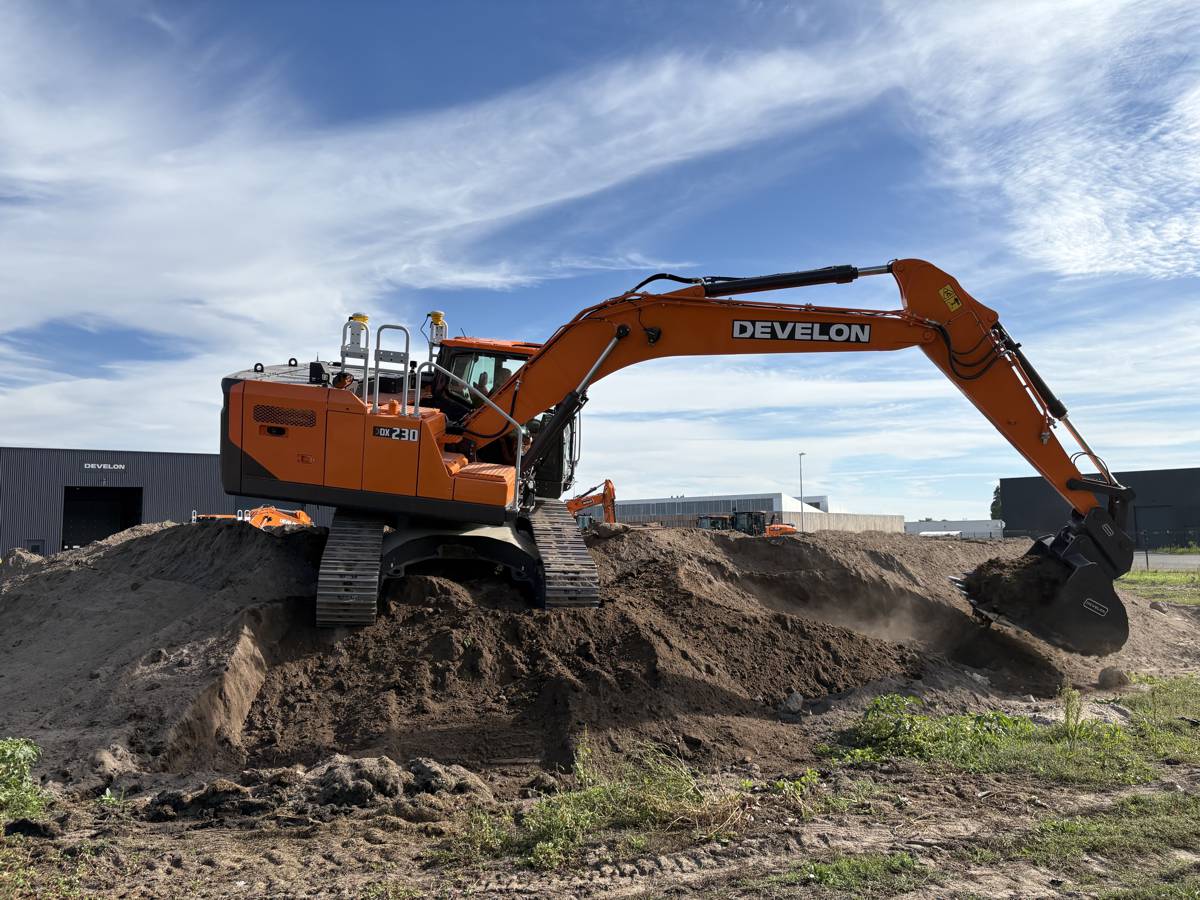The Innovative Future of Winter Maintenance
Winter maintenance has always been a demanding responsibility, yet recent years have amplified the strain on road authorities. Climate volatility, ageing transport networks, and rising public expectations have created an environment in which traditional, reactive maintenance models simply cannot keep pace. Departments are now tasked with protecting mobility and safety under increasingly complex conditions while balancing shrinking budgets and persistent infrastructure deterioration.
A transition from reactive work to strategic, intelligence-led management is becoming essential. Modern winter operations require actionable data, integrated technology, and the ability to anticipate problems before they escalate. This shift is being accelerated by advances in geospatial intelligence, artificial intelligence, and asset lifecycle management platforms that bring clarity, precision, and efficiency to one of the toughest jobs in public infrastructure.
Understanding The Complexity Of Winter Maintenance
Every winter season introduces a relentless web of challenges that stretch the capabilities of even the most seasoned municipal and national agencies. Situational awareness sits at the heart of the challenge. Without accurate, real-time visibility of road conditions, fleet movements, and resource levels, departments are left reacting to events rather than steering them.
Public communication often becomes strained when visibility breaks down. Residents, businesses, logistics operators, and emergency services want clear answers about when roads will be cleared and whether travel is safe. Without reliable data, departments struggle to issue timely, trustworthy updates, leaving citizens frustrated and eroding confidence in public services.
Operationally, manual recordkeeping remains a common bottleneck. Crews logging miles ploughed or materials spread on paper or basic spreadsheets creates delays and blind spots. Supervisors working without automated vehicle location capabilities have limited control over routing and resource deployment, weakening their ability to adapt to fast-changing conditions.
Another often overlooked issue is pre-winter pavement assessment. Minor cracks and surface defects that appear harmless in autumn can evolve into severe hazards when exposed to freeze–thaw cycles. Addressing damage proactively can prevent a season of costly repairs, yet traditional assessment approaches lack the speed and accuracy needed to cover entire networks efficiently.
Hidden Costs That Accumulate Through The Season
The financial and safety implications of winter neglect ripple far beyond visible surface damage. When pavements deteriorate, rutting and potholing increase the risk of skidding, collisions, and vehicle damage. Municipalities may also face liability exposure when poor surface conditions contribute to accidents.
Deferred maintenance fuels escalating repair costs. A routine crack seal costing only a few dollars per linear foot can, when ignored, transform into a pothole requiring repairs costing up to fifty dollars per square foot. Severe failures requiring full-depth reconstruction multiply costs several hundredfold.
Equipment damage represents another expensive consequence. Snowploughs striking hidden potholes can incur thousands of dollars in cutting-edge or hydraulic system repairs, reducing fleet readiness during crucial weather events.
Beyond civil assets, municipalities and contractors face the broader challenge of maintaining mixed fleets of excavators, dozers, loaders, and service vehicles. Many organisations postpone maintenance until winter quiet periods, yet this can backfire, leading to breakdowns during peak summer construction seasons.
Digital tools, such as Trimble’s B2W Maintain, offer an alternative. The platform automates preventive maintenance schedules, sends alerts when equipment requires attention, and consolidates work orders to minimise downtime and extend asset life.
Preparation for winter offers a unique opportunity. Establishing equipment databases, documenting repair histories, registering warranties, and creating maintenance codes lays the groundwork for resilient year-round operations.
Proactive Analysis Powered By Mobile Mapping
Modern winter strategy is increasingly built on GIS-centric data collection and proactive pavement analysis. Trimble’s MX mobile mapping systems enable agencies to survey entire networks at highway speeds, collecting rich datasets—including LiDAR, high-resolution imagery, and positional data—without disrupting traffic.
Once collected, datasets are georeferenced and integrated into GIS platforms. The real breakthrough lies in applying artificial intelligence. As found in Trimble Business Center, automated feature extraction algorithms scan LiDAR point clouds to detect cracks, classify them by severity, and prioritise repairs.
This removes the subjectivity of manual inspections and offers scalable, consistent, and repeatable assessments. Departments can then schedule targeted sealing and surface treatments before winter sets in, avoiding the costly deterioration that freeze–thaw cycles inevitably cause.
Additional innovations continue to emerge. Autonomous snowplough prototypes equipped with positioning technologies, such as Trimble RTX, demonstrate how future fleets may navigate with remarkable accuracy, even in heavy snowfall.
Integrated Asset Management For Seasonal Preparedness
Asset Lifecycle Management platforms are becoming indispensable for coordinating winter performance. Trimble Unity ALM supports an end-to-end digital ecosystem that links pavement assessments, maintenance planning, budget forecasts, and task execution.
The software creates seamless communication between field and office, ensuring that data gathered during mobile mapping or winter operations flows directly into maintenance workflows. Crews, supervisors, and administrators all work from a single source of truth, reducing administrative errors and improving operational discipline.
The ALM environment also enables departments to justify budget requests with verifiable data showing the consequences of deferred maintenance and the value of preventive programmes.
Real-Time Intelligence Transforming Daily Operations
The largest efficiency gains often emerge during active winter events. AVL and digital work order systems give dispatchers real-time insights into fleet status, road conditions, and resource levels.
Plough locations, lane miles cleared, salt usage rates, and material levels can all be tracked instantly. When integrated with Highway Automated Road Weather Information Systems, operations centres can correlate sensor data on temperature, precipitation, friction, and surface conditions with fleet deployment.
Modern systems also support inventory tracking for brine, salt, and sand, enabling more accurate purchasing and ensuring materials are used responsibly.
Public communication becomes sharper too. Authorities can push live information to mobile apps, websites, and social channels, giving residents reliable updates on clearance progress, estimated plough arrival times, and hazardous areas.
Breaking The Reactive Cycle With Predictive Maintenance
Predictive maintenance represents a pivotal shift in winter operations. Instead of reacting to damage, agencies can use digital analysis to forecast wear patterns and intervene before failures occur.
Mobile mapping data, AI defect analysis, and ALM platforms allow departments to:
- Estimate deterioration rates and predict problem areas.
- Schedule early repairs that avoid costly failures.
- Allocate budgets based on evidence rather than assumptions.
This changes how authorities plan spring and summer work programmes. Instead of scrambling to assess damage after thaw, departments already know what needs attention and can secure materials, schedule crews, and plan closures months in advance.
Making Data Work Harder For Every Agency
The most impactful winter strategies are those that make data accessible, actionable, and integrated. Web-based platforms running on open standards reduce IT barriers and eliminate the need for complicated local installations.
Mobile apps give field teams instant access to mapping, work orders, asset histories, and inspection tools. Any updates are synchronised to the central system, creating a complete picture of the network at all times.
GIS integration, particularly with Esri ArcGIS, ensures agencies can build on existing investments. Software as a Service delivery models provide automatic updates, reducing the IT workload for public agencies.
Trimble Unity Maintain brings together AVL tracking, public communication tools, work order management, and budget monitoring. The unified view allows departments to respond faster, justify funding, and demonstrate service levels more clearly.
A Stronger, Safer Road Network Ahead
The convergence of mobile mapping, AI, and asset management is rewriting the playbook for winter maintenance. Authorities using these tools report lower repair costs, fewer emergency callouts, more efficient fleet utilisation, and stronger public trust.
As climate extremes intensify and infrastructure ages, the case for proactive, data-driven management becomes even stronger. Winter maintenance no longer needs to be reactive or unpredictable. With the right technology, agencies can safeguard mobility, protect infrastructure, and deliver safer journeys for every road user.




















